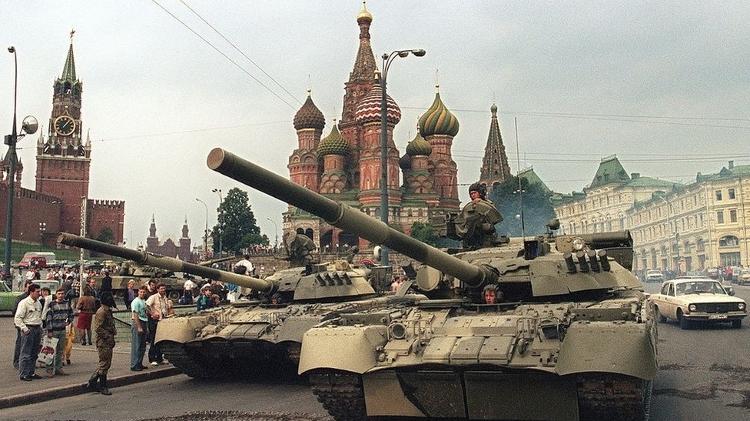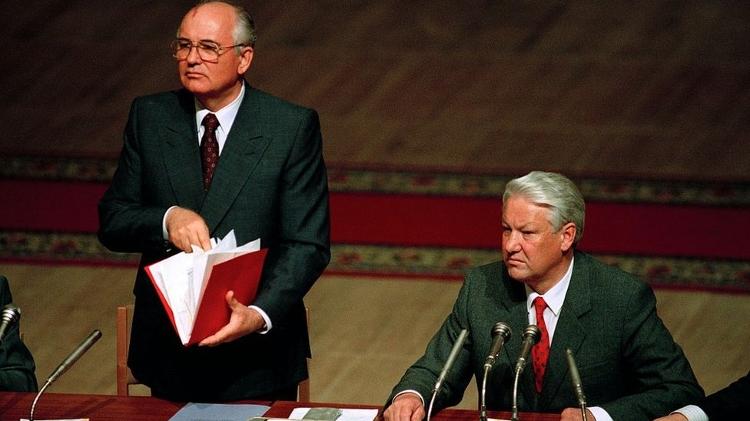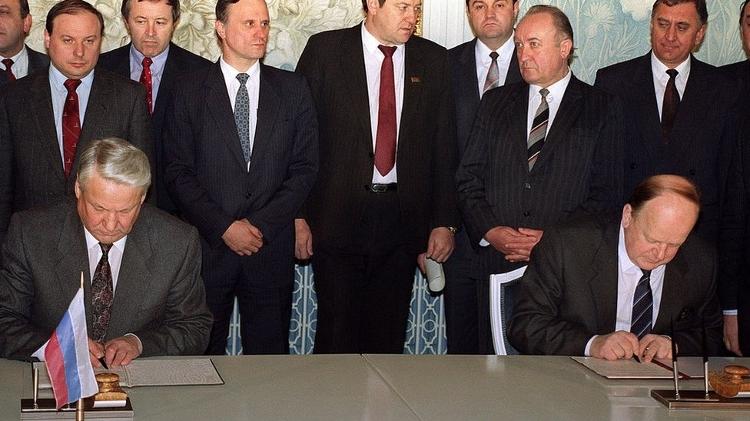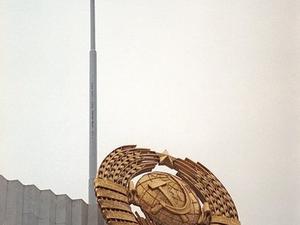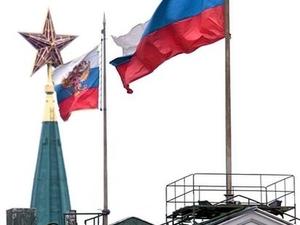Mikhail Gorbachev died on Tuesday at the age of 91. The Soviet Union was one of the two superpowers in the world for decades until it ceased to exist on December 25, 1991.
This story was originally published on December 26, 2021 and was updated on August 30, 2022.
For decades it was the only power to rival the United States, until it ceased to exist on the night of December 25, 1991. In the Kremlin, Mikhail Gorbachev said in a speech that went around the world, “With this I am interrupting my activities as the head of the Union of Soviet Socialist Republics (USSR).
A symbol of the bloc’s collapse, Gorbachev was the leader of the Communist Party and president of the USSR at the time. His death was announced this Tuesday (30/8). He was 91 years old.
For many, this moment marked the end of communist rule and the Cold War, but for others, the Soviet Union was dead weeks before with the Treaty of Belavezha.
However, the vast majority agree that the days of the Union are numbered after the August coup of that year.
Since the spring, Gorbachev and his allies in the federal government had been negotiating the New Union Treaty, aimed at keeping most republics in a much more flexible federation. They thought of the only way to save the USSR.
“They wanted to maintain some kind of unity, but over time the idea became less and less attractive to the leaders of the republics, especially Boris Yeltsin (later the leader of the Russian Soviet Federative Republic),” says journalist and author Conor O’ Clery. , author Moscow, December 25, 1991: The Last Day of the Soviet UnionTo BBC News Mundo, the BBC’s Spanish news service.
The proposal was also rejected by conservative communists, the military and the KGB (Soviet intelligence agency), and for this reason Gorbachev was placed under house arrest in his vacation home in Crimea.
But the coup planners were poorly organized and failed after a campaign of civil resistance led by Gorbachev’s ally Boris Yeltsin in Moscow.
The coup failed, but as a result Gorbachev lost his influence, while Yeltsin emerged as the Russians’ preferred leader.
“Gorbachev had planned to sign the New Union Treaty on August 20,” said Vladislav Zubok, professor of history at the London School of Economics. “But the army and the KGB thought that this agreement would destroy the USSR as a state, and I agree.” (LSE) and Soviet Union specialist.
- 5 reasons why the Soviet Union collapsed 30 years ago
“The coup was a surprise because it happened while everyone was on vacation. People expected something like this to happen, but not in August,” adds Zubok, the author of the book. A Failed Empire: From Stalin to Gorbachev The Soviet Union in the Cold War.
‘TV show’
Zubok, who was born and lived in Moscow during the Soviet era, remembers that people often believed December 25 to be a very important date, but in his view it was not.
“When Gorbachev announced his resignation, he had no power anymore. What happened was a television broadcast,” he says.
The putschists prevented the signing of the New Union Treaty in August, but they could not prevent the simmering disintegration of the Soviet Union for years.
In fact, they gave him a boost.
After the coup, many realized that the Soviet Union was over, but others, including Gorbachev, believed it could still be saved under another type of union of sovereign states.
“The idea of unity continued to appeal to millions of people used to living in one big country. Maybe they were hoping to protect it under another name or regime,” Zubok says.
But Yeltsin had another plan.
final blow
On December 8, 1991, the Russian president met with three other leaders of the 15 Soviet Republics, Ukrainian President Leonid M. Kravchuk and Belarusian leader Stanislav Shushkevich, and together they issued a statement known as the Belavezha Treaty.
This pact stipulated that the Soviet Union would dissolve and be replaced by the Commonwealth of Independent States (CIS), a confederation of former Soviet states.
For journalist Conor O’Clery, the event marked the end of the Soviet Union: “There was no turning back.”
“Gorbachev could not accept this and insisted for two or three weeks that they should maintain some kind of Union, of which he would be president,” he adds.
But on December 21, eight of the remaining 12 Soviet Republics joined the CIS with the signing of the Alma-Ata Protocol, thus dealing the final blow to the USSR.
O’Clery says it was when Gorbachev finally realized the end of an era and decided to resign in a speech he delivered on December 25.
“Yeltsin allowed him to stay in the Kremlin for a few more days and agreed to have the Kremlin’s red flag lifted on 31 December,” O’Clery said. Said.
Historian Vladislav Zubok points out that the Alma-Ata Protocol was signed “unconstitutionally”.
“They had no constitutional authority to dissolve the Soviet Union, but they got away with it. They didn’t arrest them or anything,” he insists.
“The fact was that it was now clear that the central government was completely dysfunctional and the military took from Gorbachev to give its allegiance to Yeltsin.”
last day of the USSR
Days passed without much notice until the day came when the resignation of the man responsible for perestroika was expected.
By December 25, most of the Kremlin’s halls were quiet except for a few, as Yeltsin already controlled the presidential compound.
He appointed his own commander of the Kremlin Regiment, a special unit that secures the ground so that all guards at and around the entrances remain loyal.
Gorbachev barely controlled his office and several surrounding rooms, which were used by the teams of American broadcasters CNN and ABC, who were preparing to air the resignation.
Shortly before the speech, O’Clery said Gorbachev had a phone call with British Prime Minister John Major that upset him, so he later retired to rest in a room in the Kremlin.
“She was very emotional and had a few drinks when her assistant Alexander Yakovlev found her crying in the living room,” he said.
“It was Gorbachev’s saddest moment, a moment of agony. But he quickly recovered from the incident and prepared to give a speech with great honor.”
As planned, the last leader of the Soviet Union launched a 10-minute speech at 7:00 pm local time.
Gorbachev resigned from his post in a country that no longer exists.
“We now live in a new world,” Gorbachev said, justifying his decision.
Zubok insists it’s a “television show.” CNN translated and broadcast the speech around the world via satellite.
According to experts, Gorbachev’s words resonated abroad (where he still enjoys great popularity).
“There was very little talk on Soviet television. Gorbachev was already hugely unpopular in the Union, and hardly anyone was interested. By then everyone knew the Soviet Union was dead,” says Zubok.
The historian admits that this is an “honourable” statement, but points out that it caused discontent even within the Communist Party ranks.
“He defended his mission, never admitting that he had done anything wrong. Even some of the people around him were surprised. They expected him to say something about why perestroika had gone so wrong, why there was nothing in the stores, or why the economy fell. But no,” he adds. zubok
“He continued to see perestroika as a global mission as always. And he ended his presidency with high morale. He did not want to show weakness to Yeltsin, so Yeltsin was very upset after this speech and refused to meet with Yeltsin. Gorbachev.”
O’Clery said Gorbachev could show Yeltsin more generosity and appreciation in his speech.
“After the coup, Yeltsin saved him. Without him, Gorbachev would have ended up in prison or worse,” he says.
Yeltsin’s Wrath
O’Clery notes that Yeltsin was so angry with Gorbachev that he ordered the red flag to be lifted immediately, although he had planned to raise it later that year.
Yeltsin also drafted a decree that same night ordering the removal of all personal belongings of Gorbachev and his wife from the presidential compound, but previously said the couple could stay there for a few more days.
At 19:32 the Soviet flag was replaced by that of the Russian Federation.
“Gorbachev returned home to find his wife among the books and photographs that Yeltsin’s subordinates had thrown on the floor,” says O’Clery.
Yeltsin and Gorbachev did not meet again after this speech.
A sign of Gorbachev’s low popularity in Russia could be seen the moment the USSR flag was lowered from the Kremlin: Moscow’s Red Square was virtually deserted.
At 19:32 on that historic night, the Soviet flag was replaced by the flag of the Russian Federation, whose first president was Boris Yeltsin.
And at that very moment, the country, which for decades was the largest communist state in history, was officially divided into 15 independent republics: Armenia, Azerbaijan, Belarus, Estonia, Georgia, Kazakhstan, Kyrgyzstan, Latvia, Lithuania, Moldova, Russia, Tajikistan, Turkmenistan. . , Ukraine and Uzbekistan.
At the same time, on the other side of the world, the United States solidified itself as the only global superpower at the time.
Did you know that the BBC is also on Telegram? subscribe to the channel.
Have you watched our new videos on YouTube?? Subscribe to our channel!
source: Noticias
